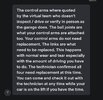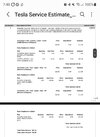From what I could tell in installing the zerks, your 2nd comment seems to be more accurate: "A zerk may only be useful as a reservoir of grease to gradually seep into the ball area". When you drill into the black top cap, you eventually hit a thin, white plastic liner followed by the steel of the ball joint. I think the joint and liner are tight enough that much grease doesn't get pumped in there (it didn't take much pumping on the grease gun to get to where you feel resistance). But as you drive and the ball joint moves slightly, I'm sure that the grease gets spread around. I did this with the car on the ground and am not sure if jacking up the front end would relieve some pressure on the ball joint + liner and allow more grease to flow in. But if you install the zerks, try having the front wheels off the ground and see.




